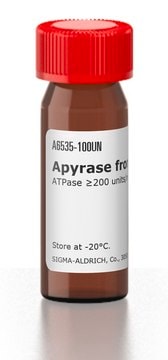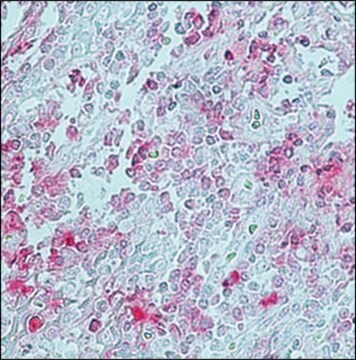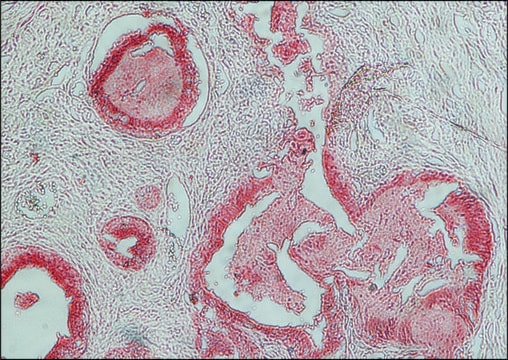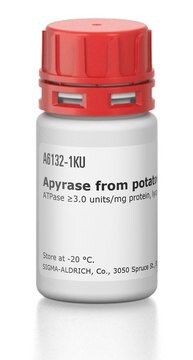A2306
Immunoglobuliny monoklonalne przeciw królikom- fosfataza alkaliczna
clone RG-16, purified immunoglobulin, buffered aqueous glycerol solution
Synonim(y):
Monoclonal Anti-Rabbit Immunoglobulins (IgG, IgA, IgM)
About This Item
Polecane produkty
pochodzenie biologiczne
mouse
białko sprzężone
alkaline phosphatase conjugate
forma przeciwciała
purified immunoglobulin
rodzaj przeciwciała
secondary antibodies
klon
RG-16, monoclonal
Formularz
buffered aqueous glycerol solution
reaktywność gatunkowa
rabbit
spodziewany brak reakcji z
pig, chicken, bovine, horse, human, guinea pig, turkey, rat, canine, goat, feline, sheep
metody
direct ELISA: 1:40,000
immunohistochemistry (formalin-fixed, paraffin-embedded sections): 1:160 using human tonsil and Cat. No. I8635 as the primary antibody
western blot: 1:160,000-1:320,000 using detecting β-actin in total cell extract of HeLa cells (5-10 μg per well)
izotyp
IgG1
Warunki transportu
wet ice
temp. przechowywania
2-8°C
docelowa modyfikacja potranslacyjna
unmodified
Szukasz podobnych produktów? Odwiedź Przewodnik dotyczący porównywania produktów
Opis ogólny
Specyficzność
Zastosowanie
- pośrednim teście immunoenzymatycznym (ELISA)
- immunoblottingu
- immunohistochemii
Działania biochem./fizjol.
Mysie monoklonalne przeciwciało przeciwko króliczym immunoglobulinom-fosfatazy alkalicznej wiąże się z epitopem na łańcuchu ciężkim króliczych IgG, IgA i IgM. Produkt wybarwia pasma na nienaruszonej całej cząsteczce i na łańcuchach ciężkich w immunoblocie zdenaturowanych, nieredukowanych immunoglobulin króliczych. Redukcja króliczych immunoglobulin niszczy epitop. W teście ELISA produkt nie wykazuje reakcji krzyżowej z ludzką surowicą lub preparatami tkankowymi, ani z ludzkimi IgA, IgG lub IgM.
Postać fizyczna
Oświadczenie o zrzeczeniu się odpowiedzialności
Nie możesz znaleźć właściwego produktu?
Wypróbuj nasz Narzędzie selektora produktów.
Kod klasy składowania
10 - Combustible liquids
Klasa zagrożenia wodnego (WGK)
WGK 3
Temperatura zapłonu (°F)
Not applicable
Temperatura zapłonu (°C)
Not applicable
Środki ochrony indywidualnej
Eyeshields, Gloves, multi-purpose combination respirator cartridge (US)
Wybierz jedną z najnowszych wersji:
Masz już ten produkt?
Dokumenty związane z niedawno zakupionymi produktami zostały zamieszczone w Bibliotece dokumentów.
Nasz zespół naukowców ma doświadczenie we wszystkich obszarach badań, w tym w naukach przyrodniczych, materiałoznawstwie, syntezie chemicznej, chromatografii, analityce i wielu innych dziedzinach.
Skontaktuj się z zespołem ds. pomocy technicznej








